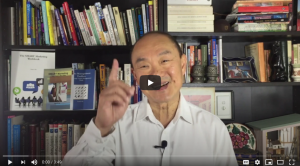10 Marketing Strategies You Can Use Right Now
In the last few weeks, I have written about how marketing is really all about helping customers solve their problems. You can go to the blogs at Teik Oh Dot Com to catch up.
However, I thought this week I’d give you some marketing strategies you can use right now.
But don’t get me wrong – these aren’t copy-and paste-strategies, and you do have to do some homework yourself on how you can apply this to your situation. However, if you spend just a little time to fine-tune these ideas for your business, I’m sure that you can use some of these strategies immediately.
Here we go!
Strategy #1: Make sure you know what your customer gets from your product.
Ok, you’re going to say “Teik, that’s not a strategy! I can’t use it to find more customers right now!”
But you’d be wrong!
This is a key-stone strategy. The better you know how your customers benefit from buying your product, the more you’ll be able to attract them with the right messages. If you are selling auto-mechanic services and you keep blasting your customers with how you use quality products, they’ll turn a deaf ear because that’s what they hope you would do anyway.
But if you knew that what they wanted wasn’t so much a reliable car (believe it or not) but peace of mind that nothing will go wrong (that’s entirely different from wanting a reliable car, one is caused by the other) then if you keep telling them that you’ve got this, you know their vehicle, you’ve spotted the current and potential issues, they can just forget about any issues until the next service, they can have peace of mind – the more they will listen to you.
Strategy #2: Adjust your prices to reflect your product and your customers.
In an extreme example, if you own a Two-Dollar store, then don’t sell Rolex watches, even if a crate fell off the back of a truck. They don’t suit your store and they don’t suit your customers. People who buy Rolex watches wouldn’t be caught dead buying a watch from your store. People who buy from your store wouldn’t pay the Rolex price even if heavily discounted. Anyone else would simply suspect they are fakes.
On the other hand, there are other businesses like professional businesses – accountants, lawyers, engineers – who price their services according to the “market”. Who determines the market anyway? How does the market distinguish between specialist services, or expert services, or special services within the market?
Let’s say you’re an engineer with a special, perfected process and the experience to build something that very few other engineering firms can. Do you still charge the “market” $300 per hour that every engineer charges? Or do you specify that your “normal” charges are $300 per hour, but to get your expertise, experience, and special process to build this special thing, it’s $500 per hours, and count yourself lucky Mr Client!
Pricing distinguishes you from the competition and will attract target market customers seeking the characteristics you display.
Strategy #3: Use the power of the co-op.
As small business owners, it’s pretty lonely out there.
But it needn’t be. You can negotiate with other small businesses in your locality that have complementary businesses to market together. This can either be a simple referral system, or it can be as big as a major hand-to-hand product or service that your customer can get from different small businesses expert or specialising in parts of the whole.
Here are some examples:
- If you are a clothing retailer in a suburban strip mall, you can have an agreement with the tailor next door to hand out discount cards for their hemming service. Your customers would be appreciative and be sure to come back.
- The same clothing retailer and the shoe shop down the mall can provide discount cards to their customers so that if you buy a pair of shoes you get 10% off a dress that might go really well with them and vice versa. You help each other out, and your customers get to share the benefit.
- As a physiotherapist treating frozen shoulders, you can set up a chain with a sports doctor, a chiropractor and a massage therapist. When your client comes to you and is diagnosed, you can provide treatment, refer her to the doctor to make sure there’s nothing else wrong, share treatment between soft tissue and mechanical adjustment with the chiropractor, and the client can get a regular massage to just feel good! Obviously, everyone in the chain would do the same thing the other way.
Strategy #4: Hold a seminar or workshop.
This may not work for all industries but you’d be surprised at how many this could work for.
Organise a workshop or seminar where your customers can learn something, or be exposed to some new ideas about their problem. This is the key. Don’t organise a seminar to talk about how great your product is, it must be something that will help your customer understand or be closer to solving their problem. They must get something – for free or at very little cost depending on what you are giving them (see Strategy #2).
An accountant might hold an evening seminar with coffee and nibbles – for their clients plus friends, or for the local business community (whatever is their target market) – to discuss the latest tax changes affecting small businesses’ deductions. If the seminar is about too esoteric or complex a subject, it won’t work – make it about saving money.
Here are some other examples, including industries that are not so obvious:
- Lawyers – the 10 biggest traps in employment law
- Dentists – 10 minutes to protect yourself from tooth decay
- Doctors – community stretch and breath evening
- Physical Trainers – what to do every morning to wake up your tired body
- Shoe shops – leather conditioning and shoe care
- Mechanics – how to change your own oil
- Dress shops – the latest styles and how to accessorise them
Strategy #5: Hold a sale.
Yes, this is a perennial favourite but it works!
The only thing is don’t hold a sale every other month – make it a rare and looked-forward-to event. Over time if you do this right, it will become a locally recognised event.
You can hold “Black Friday Sales” but make sure that it is spectacular, and not just another sale people expect.
It’s a great strategy to get rid of slow-moving stock. But it’s also a great strategy to release new versions of your product. You might think that’s a waste of a discount because people will buy your new product anyway. Well, that’s not entirely true – some people will buy it, but other will hang back because they already have the old version and it works just fine. A special introductory sale may just tip them over the edge. Think of your own attitude with your 2-year old iPhone when the latest version comes out.
Build on the sale event. Collect names and addresses (so you can send them other special subscriber offers and keep in touch). Give them product brochures to take home and which they might follow through with later. Do something that makes the sale event build ongoing contact with the customer.
Strategy #6: Be the expert.
People remember “experts”.
Seize any opportunity to be interviewed in media about what you are an expert at. Contact local newspapers or TV stations to see if they want a piece on what you are an expert in. You’d be surprised at how many “fluff” pieces get made for local interest or human interest stories in the media, especially on a slow day.
If there is a current event that uses your expertise, don’t be shy at telling local media you can comment on it.
Even paid feature articles work better than straight advertisements – people remember experts!
Some examples?
- Local dog attack – as a dog-trainer talk about how to train your dog and what to do if you are attacked
- Fire in the shopping mall – as a security expert get interviewed on how to make your premises safe
- Covid measures for small business – as an accountant, write an article on how a small business can benefit
- Experienced cobbler? Write a series of articles on leather care during the winter on local muddy streets
Strategy #7: Start a loyalty card campaign.
You’ve been part of this before, I’m sure, you know, buy a cup of coffee and get your card stamped. Ten coffees later you can get a free coffee and cake. In the meantime, thinking about that free coffee and cake, you’ve bought ten coffees from this one coffee-shop rather than another when you might have otherwise spread your purchases around.
Loyalty cards encourage loyalty – it’s that simple.
But make sure the reward (while not losing you money) is worthwhile – a benefit – to your customer.
Strategy #8: Start a “frequent flyer” program.
A frequent flyer program does not have the same objectives as a loyalty card program, even though it may have started the same way.
Did you know airlines have monetised their frequent flyer programs so that some now earn more profit from their frequent flyer programs than selling travel?
How that works is that due to the millions of points they have issued (initially to travellers who accumulated points to get free travel or upgrades) but which don’t get taken up and keep being accumulated, the airlines have sold points to other suppliers. So for example, a chain of tyre shops might buy points from an airline that they can offer to their own customers as a reward. Or, a wine merchant might “sell” a case of wine for airline points – they make a sale, the airline expires the points and takes a commission.
You would have to show other businesses that you have so many customers and are issuing so many points for them to be interested in such a program.
However, you can run a frequent flyer program in a small way.
- Provide points to customers for buying your products (say 1 point per dollar spent)
- When they accumulate a certain number of points they can trade their points for purchases (at say 20 cents per point)
- Collaborate with other businesses (see Strategy #3) to offer points as well and customers can use the points you all give away to buy from any of the collaborative group)
Strategy #9: Special offer upsells.
This is a discount sale that’s really an upsell.
From time to time you can create special offers where your customer gets a discount for a product if they buy a complementary upgrade.
For example:
- A car mechanic offers a 20% discount for the regular 100k service if they also buy two new tyres
- An accountant gives the client a free business audit if they spend over $10,000 on their annual accounts and tax return
- A hairdresser gives a half-price haircut if you also choose to colour your hair
- If you buy a laptop and add a 24-inch screen to your purchase, you get 10% off the price of the screen
- Buy a meal and get a free glass of wine
Strategy #10: Get to know your customer.
“There you go again,” you say, “Teik, get to know your customer is not a strategy!”
Sorry, getting to know your customer is a strategy and like Strategy #1 it is another keystone strategy. The more you know your customer, the more you’ll be able to apply Strategies #2 to #9.
What do you need to get to know?
- Who are they exactly? Where do they come from? Where do they gather socially or to seek solutions for their problem? What do they like and not like? How old are they, what income do they have, and so on? Knowing this will help you identify the type of customer who is most ready to buy from you, the low hanging fruit.
- What is their problem, exactly? If they want a power drill – is it because they are professional carpenters and need one to use all day? Or are they DIY “experts” wanting to hang a picture every 3 or 4 months? Knowing their exact problem allows you to solve exactly their problem, and not some generic need.
- How do they feel about their problem and what would they like to feel about a potential solution? We buy with our hearts first, and then having made a decision, try to justify it with our brain. Someone taking their car to the mechanic to get fixed has a problem with an engine that splutters, But what they feel is worry. They would like to feel lack of worry. So, don’t offer them a new anything – just offer care and promise the lack of worry, and then fix the problem.
Start marketing now!
There you have it, don’t delay.
You have 10 marketing strategies you could implement right now.
Yes, it’s true, you may have to do some homework (like Strategies #1 and #10) and you may have to cost some prices and discounts, but don’t let that stop you doing something!
In today’s business climate, those that say they “don’t need to market” are dead or dying. Sorry to be so blunt.
You can read more articles about marketing your business in the blog or you can buy my “fairy-tale” novel about how a small business created a focused marketing campaign to grow their business. There’s even an accompanying workbook with all the templates you need to get focused on your marketing.
But if you really want to up your marketing game significantly, go check out my online workshop/training on how to write your focused SMART Marketing Plan.
See you soon!







No comments yet.
Add your comment